Results 1 to 10 of 10
-
April 3, 2014, 01:14 PM #1
A small DAC Comparison, East Coast Style.
DAC Shootout
Everyone likes a great shoot out and it is even better if the results are conclusive. First the disclaimers.
1. No double blind tests were done.
2. The VERITAS Monoblocks used in some of the shootouts are manufactured by me.
3. I am the US distributor of the Sadurni Acoustics Staccato Horn System available June 1st.
4. I own the Lynx Hilo and the Meitner MA-1 DAC’s.
5. The Cables in some systems were built by me.
6. Several systems were used and not all well documented.
7. I don't like writing.
I will summarize the result first. You can read on to find out more as well as some of the other reviewers’ opinions and listening tests. We all came to the same Conclusion, the Meitner MA-1 was the best in the group of DACs that we tested, excluding the Teac Hd-501 (more to be done objectively here). Also note that it was the most expensive at $7,500.
The search for the DAC started with the Bi-amped Sanders Electrostatic Sound Speakers. The speakers come with a Behringer DCX2496 Active Equalizer that is less than ideal for such a revealing speaker. A few options were looked at and done – modifying the Behringer DCX2496, using the DEQX and finally using the Hilo Lynx with 4 channel output in conjunction with Channel D’s Pure Music and FabFilters software for the curves. Rob Robinson introduced and set up the FabFilters according to the curves provided by Roger Sanders of Sander Sound along with the Pure Vinyl Software from Channel D. The improvement over the Behringer/Pre-Amp/AMR 777 DAC was startling. Much cleaner, clearing, sharper music reproduction. So began the self-imposed gun fight.
First up was the AMR777 DAC from the owner of the Sanders Sound Electrostatic Speakers, against the Lynx Hilo. Since the AMR only had 2 channels and we needed 4, it was decided to use the Gallo Reference 3.5 to do the test. While the Gallo speakers were not as good in some respects as the Sanders Electrostatics and better in other respects, the Gallo only required 2 channels, perfect for this shoot out. Lynx Hilo - 15, AMR 777- 0. The Lynx was much cleaner, clearer, with tighter imaging and better bass.
With the Lynx as the current reigning champion, the Meitner MA-1 stepped into the ring. Since only 2 channels were required, the Gallo Reference 3.5 speakers were used. With the Lynx Hilo being a big step up from the AMR, the expectations were high. How much better could this get. The Meitner stepped up with better bass, cleaner and clear mids, highs, slightly better imaging. The biggest improvement would be the bass and the cleaner sound. Was it too clean, was it sterile. The answer from the test group was a very loud NO. It was very good, fast and very clean without being sterile at all. The vocals are always a big test for this.
A Note on the rest of the system and the room for future reference. First note that the speakers were changed for the final shootout. The Room is 20' wide x 30' long x 11' high with absorbers in the front wall, diffusers on the side wall, absorbers and diffusers on the ceiling and some diffusers on the back wall. For clarification, The Back wall is behind the listener. The main speakers were about 5 feet from the side wall and 6 feet from the front wall. The Gallos were placed in a near field listening position. That is about 10 feet from the front wall and 7 feet from the side walls. The equipment rack was on the right about par with the listening seats and about 2 feet from the wall. There were 2 listening chairs with the back of the 1st chair about 105 inches from each speaker. The 2nd chair is directly behind the first chair and the 3rd person would stand directly behind the 2nd Chair. This is done so the imaging would be good for all three listeners although the sound and image would different for all three. We did rotate seats to get concurrence. However you could get a very good sense of image, detail and 3D sound stage from any of the chairs in this configuration.
The Rack is made of solid slate slabs. All outlets from dedicated 20 amp circuits directly from the fuse box as this is a dedicated listening room. There are some conditioning extensions just for RF filtering but no serious power conditioners used. Interconnects and Speaker Cables are the ANAP Merrill Audio cables. The VERITAS Monoblocks are used for the power amplifiers. (Yes, my name is all over, for better or for worse). Music range is all ripped from 44/16 to Double DSD. Note that only 1 DAC has double DSD capability in this review. Unless significant, I will not mention the digital music played.
The group of people involved was local Audiophiles from various locations and societies or publications. To name some – NJ Audio Society, NY Audio Society, NY RAVE, Philadelphia Audio Society, CT (formerly from CT Audio Society), webzine executive editor, manufacturers. Names were left off to protect the audiophiles from their wives. The only groups not represented from the local area were the Saintly Wives of the Audiophiles. Yes, it was all male as usual with testosterone riding high, no need for testosterone supplements here!
While the group was large, not everyone was at all the shootouts and no single person was at every shoot out. However there is a core known group that had representation at all the shootout events. Perhaps this could also be construed as bias group.
The type of sound that the whole group is looking for will also have to be defined as Clean, Fast transients on vocals piano and percussion, Details galore, decay’s that go on for ever, controlled tight strong bass, deep bass, as little distortion as possible. Typical music that was played - Eiji Oui, Minnesota Orchestra Dance of the tumblers (Rimsky Korsakov), Count Basie Bluesville, Crown imperial Jerry Junkin, Benjamin Dave Brubeck Quartet, Wailin Jennys The parting Glass, New year’s eve on the waterfront by the Stimulators, Roland Batik. This is just a sample. Many others were play depending on the time of day, shoot out time frame and location. The music was to test the low end response, transient speed, 3 dimensional image, details of the music, naturalness of the vocals and decay. Some pieces helped determine more than 1 attribute and others a smaller number of attributes, sometimes only 1 attribute, like the Wailin Jennys was mainly only female vocals naturalness although there was some good information with decay and detail of the vocals.
Finally another disclaimer – this is by no means comprehensive or we would all be Audio Gods!
On to the other tests. So the Meitner took on the Lynx Hilo and won. Note that the Lynx Hilo is only $2,500 while the Meitner is $7,500. The Lynx Hilo has 4 channel output, 2 input, A/D converters, digital inputs and outputs. So there are a slew of features, all for $2,500. The Meitner only has digital inputs and analog outputs – a plain Jane DAC, for $7,500. Weight wise, the Lynx is heavier but smaller in size. The Lynx Hilo is excellent value for the price.
Independently in another system the Exasound and the Wyred4sound was tested by the 2 respective owners in 2 separate locations, different from the one described above. The ExaSound was the clear winner with just sounding less harsh. (I was there but not paying attention).
The Exasound and the Lynx were put together, in yet another location! This time using Von Schweikert VR4jr MKII speakers (I own them also). The result was a toss up. This could be because the system was not as revealing as it should be, the location was not the best and the music playback has some issues. So this would not be a definitive test. Since I owned the Lynx I felt the Lynx was a bit better while the Exasound owner felt the Exasound was better. Go figure, why can’t everyone think like me!
Despite our differences, we did not kill each other and walked away happy with our respective ownership. To be continued. Maybe.
Next inline was the Phasure DAC versus the Exasound and the Meitner. The location was the home for the Phasure. The equipment is listed as, “Golden Ear Triton II. His amps are built by B-D Design in the Netherlands. amp was built by Peter's (Phasaure designer and builder) friend Bert of BD Design. It's the same amp that resides in each of the Orlenio Speakers that Bert designed and that Peter now uses. You gotta hear it to believe it.”
With the DAC’s directly driving the Amplifiers ( I was not there so could not comment on the location, sound or the equipment). The winner was the Phasure. 4 dedicated, die hard audiophiles (are there any other kind) were present, including the Owner of the Exasound. Ding Ding. Round 3. Winner Phasure.
Out of curiosity I wanted to try the Double DSD Teac Hd-501 DAC which a local diehard Audiophile had purchased. While I own the Tascam DA-3000, I am the audiophile that must try toys that I have do not have versus the ones that I have. So I must confess I have not tried the DA-3000, which has Double DSD against any of the other DAC’s.
The Teac HD-501 is only about $800. It is a tight, compact little player with nice features like different filters for the DSD and PCM. The system was B&K Pre, Martin Local Speakers and a Parasound Power Amp. The competition was the Meitner. The Music was Direct DSD cuts from the Ella swings Brightly with Riddle (1962) master tape, courtesy of High Definition Tape Transfers (HDTT) Robert Witrak. While these were DSD and double DSD tracks, the editing was done in DXD PCM.
The fight was between the Meitner MA-1($7,500) and the Teac HD-501($800). The underdog Teac with double DSD seem to take the day with some reservation from me. The Teac for $800 is a lot of sound for the money. The Ella tracks did not have much bass at all. The Martin Logan speakers did not have much bass also. The system was very nice and pleasant to listen to, it was not as revealing as some other systems. The contest was also a little rushed due to my time constraints. The one big take away that was very audible was that the double DSD was much better than the single DSD. The image was very perceptible more defined, the location, size very clear on the double DSD. The sound was smoother on the double DSD. I was surprised on how much better the Double DSD was, as was the owner of the Teac. That was the big take away. Note that the Meitner does not do double DSD so this was all from the Teac.
Next was the grand finale to check the Phasure in the most revealing system of all. This is in the location as described above however the speakers were changed out to the Sadurni Acoustic Staccato Horn System. The speakers are bi-amp however the configuration requires only 2 channels instead of the 4 that the Sanders Electrostats require. This allowed all the 2 channel DAC’s to be used directly.
First up was the Phasure driving the VERITAS Monoblocks directly. The crowd was 8 strong, 3 of them smelled fishy probably from the “all you can eat” sushi lunch. At the end of the song, the crowd stood up and applauded. Bravo, Bravo. Next using the pre-amp, the Phasure ran into trouble, not because of the Phasure but because of an RCA cable, believe it or not. The sound was made very hot with that cable for some reason. After that was corrected, the Phasure and the Meitner ran through the Pre-amp for playback. The Meitner came back as the winner, clearly strong, more articulate bass. The mids and highs were richer, more information was heard. The image was stronger and more defined though not by much against the Phasure. A lot more was done including songs, cables, coffee. The outcome was the same the Meitner was ahead.
So the question would be why which I will spend a short time on. The speakers are very fast, clear and detailed. You can hear everything on the Staccato Horn speaker system. It is 110db. The same was felt with the VERITAS by the manufacturer of the speaker and the owner of the VERITAS. The Tube Distinctions amp (see pictures), same owner, uses the VERITAS almost exclusively using the Tube distinctions to keep the VERITAS honest. The VERITAS is also able to control the bass extremely well. The Staccato has very little distortion, so the clarity of the music, cable or anything else is always obvious. The vocals had more information and greater definition. You hear everything here, This is an amazing speaker with almost no distortion. Driven by the VERITAS Monoblocks, the system will let you know what the singer had for lunch and the last time they took a bath. That is why we brought the Phasure and Meitner here.
The Phasure is an excellent DAC that does nothing wrong at all. It is very pleasant and has a lot of tuning that can be done. Note the playback of the music was done by the Phasure software to the Phasure DAC and the Meitner DAC on a water cooled PC and the drive was external all on Stillpoints. So a lot was done to get everything out of this system.
Excluding the PC, the Phasure DAC/Software is $4,500. The Meitner $7,000. So dollar for dollar, the Phasure would take the prize. For absolute sound the Meitner would take the prize.
A bit about the sound of both. The Phasure has a very pleasant, clean sound. That strikes you up front as you listen. There is absolutely nothing wrong that it does. The Meitner has much stronger, controlled bass, very obvious with the Brubeck Benjamin. The Meitner also have a much fuller vocal presentation, obvious with the Jennings music. The overall presentation, stage was slightly better with the Meitner. The decay was longer with the Meitner. The transients, as consistent with the bass observation, was better with the Meitner.
Either way, both DACs walked out of there with their heads held high. FYI, the shootout started at 2pm, and finished at 8pm. Strong coffee was served at 4pm. All music was PCM. No DSD was played.
Hopefully some of the other parties present will provide their comments here also.
Till the next DAC shootout, I propose we call a truce and enjoy some of the wonderful music that is out there.
Finally please excuse my bad writing skills and any biases I might have in here. Hopefully you can read past that.
I had originally posted the above on whatsbestforum. Below is new.
Price wise all DAC's held their own with I believe the Lynx Hilo, IMHO, still the greatest value. It has 2 analog inputs, USB, DSD, digit outs, A/D, D/A, headphones, 4 channel analog outputs and all combination of inputs and outputs. At $2,500 it is excellent value.
Next is the Teac at $800.
Phasure at $4,500
Meitner at $7,000. At $7k, it is quite an investment and only does single DSD.
There are more expensive DAC's which were not compared and hopefully we will in the future. We (The local group) has a great base line for comparison and price points which I think nice when someone is considering DAC's.
Attachment 5852Attachment 5851Merrill Audio Advanced Technology Labs, LLC. Audio Purity.
Manufacturer for VERITAS Monoblocks, Thor Monoblocks, ANAP Cables, Jens Phono Pre-amp, Cara Pre-amp, Caileigh DAC Remote Volume. US distributor of Sadurni Acoustics Staccato Horn Speakers.
-
April 4, 2014, 09:28 PM #2
Re: A small DAC Comparison, East Coast Style.
Interesting shootout. Very surprised that the vaunted AMR didn't do better. Downright shocked that the cheap Teac stood up to such stiff competition, although perhaps a little unfair as only double dsd was the signal of choice. Assume it would slide back down the pole on a PCM basis?
Main Speakers: Revel Salon 2
Center: Revel Voice 2
Side Surrounds: B&W DS7
Back Surrounds: B&W XT4
Sub: Velodyne Optimum 12
Amps: McIntosh MC452, Sunfire TGA5200
Preamp/Processor: Krell S-1200
Sources: Esoteric K-03, Oppo BDP-95, Sonos
Wires: Various low end Audioquest ICs,SC
Power cables: Shunyata Venom3 on amp, preamp, CDP, BDP
Power Conditioners: Furman Elite-15pfi, Furman Elite-15-dmi
Rack: Salamander quad 20 with custom raised center
-
April 5, 2014, 03:58 AM #3
Re: A small DAC Comparison, East Coast Style.
The Teac HD-501 is only about $800. It is a tight, compact little player with nice features like different filters for the DSD and PCM...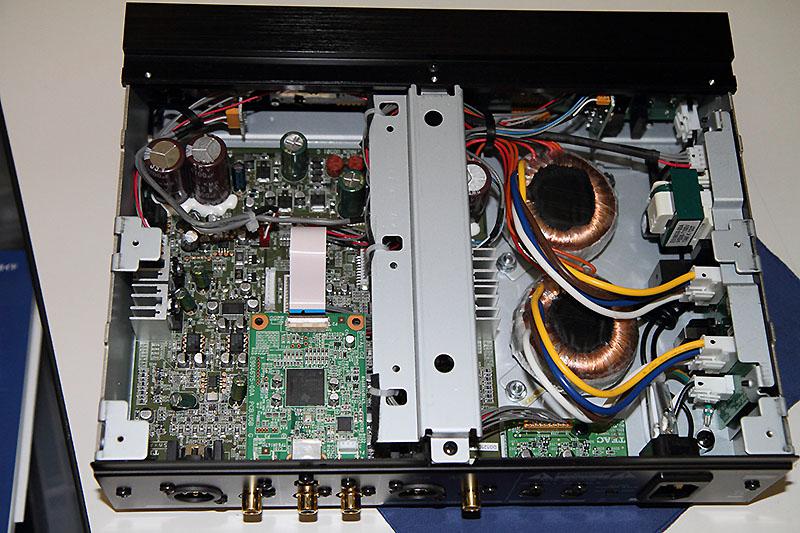
teac.com UD-501
Dual Monaural Circuits to Eliminate Signal Interference and Maximize Performance.
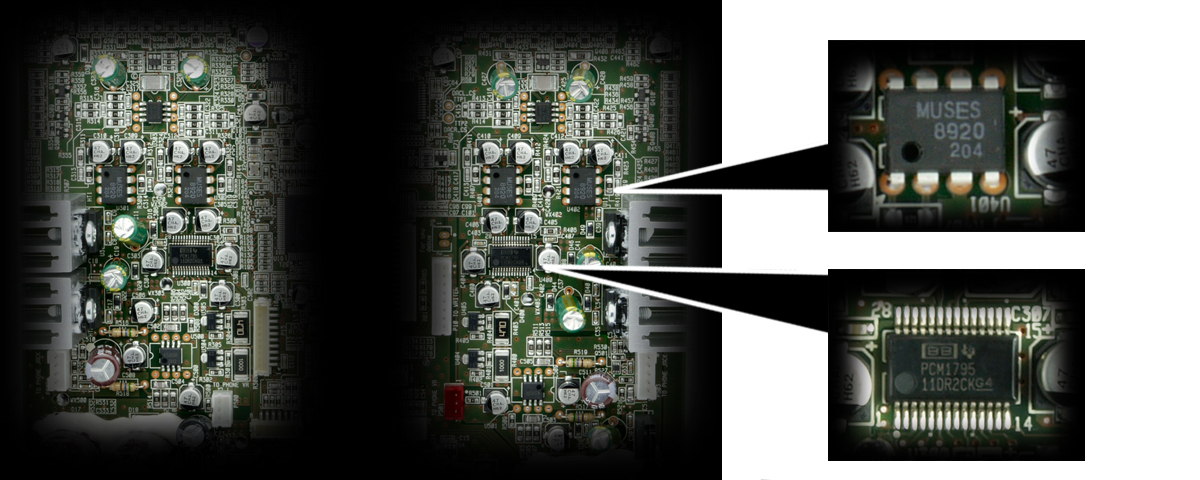
Dual MUSES8920 Operational Amplifier on Each Channel
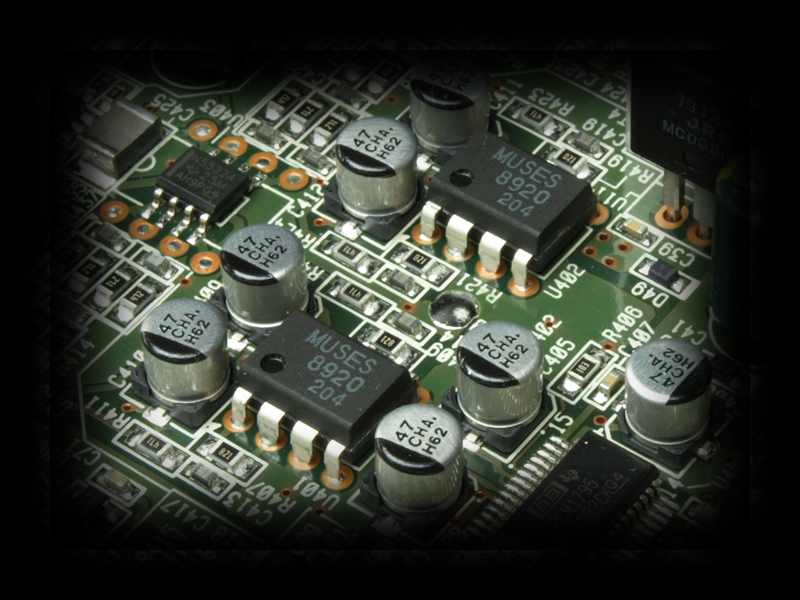
Individual Toroidal-core Power Transformer on Each Channel – Maintaining Total Dual Monaural Design
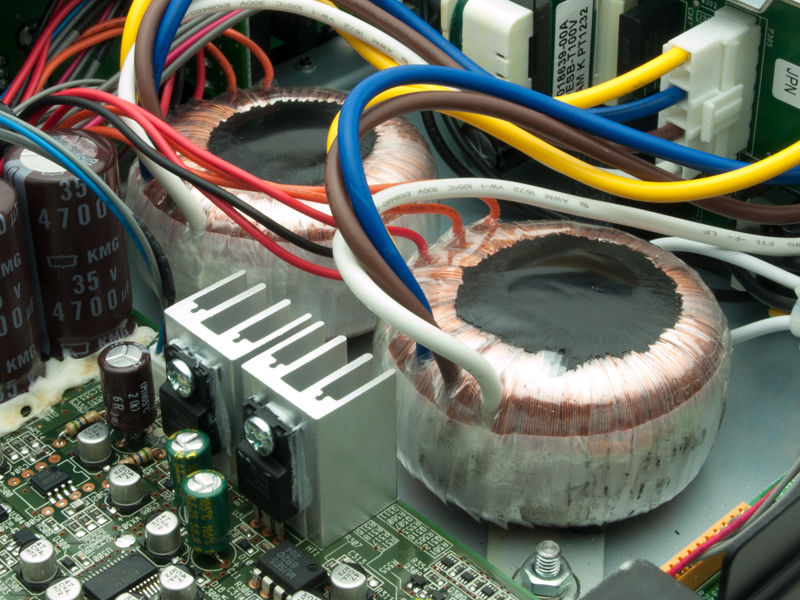
-
April 5, 2014, 04:03 AM #4
Re: A small DAC Comparison, East Coast Style.
-
April 5, 2014, 04:11 AM #5
Re: A small DAC Comparison, East Coast Style.
-
April 5, 2014, 10:45 AM #6
Re: A small DAC Comparison, East Coast Style.
My feeling is that I am not too sure that the Teac will slide down although the final word will be to test it on a better system. For the value, the Teac seems like it will be hard to beat. The owner was not please to lend the Teac out. It looks like a nice build from the pictures below.
The AMR result was very surprising also. It even lost out to the Lynx Hilo, irritating the AMR owner who subsequenty purchased the Lynx Hilo. Perhaps it is more of a taste issue as I believe the AMR has tubes. I suspect it will play CD's nicely as it will round off the hard edge of the CD's - pure speculation on my part.Merrill Audio Advanced Technology Labs, LLC. Audio Purity.
Manufacturer for VERITAS Monoblocks, Thor Monoblocks, ANAP Cables, Jens Phono Pre-amp, Cara Pre-amp, Caileigh DAC Remote Volume. US distributor of Sadurni Acoustics Staccato Horn Speakers.
-
April 5, 2014, 12:48 PM #7
Re: A small DAC Comparison, East Coast Style.
I guess you used conditioners to attenuate RFI / EMI interference from the power line.
-
April 5, 2014, 02:27 PM #8
Re: A small DAC Comparison, East Coast Style.
Would love to hear your impressions of the Teac on PCM. There seem to be a number of "reasonably" priced dacs that are standing the audio world on its ear, like the Chord QuteEX and Hugo. Both use the FPGA architecture, which is what the well regarded Classe CP 800 pre/dac used. The Classe supposedly can take any digital source, even an iPhone, and make it sound very good. I believe the highly anticipated PS Audio Digital Stream dac may use this architecture as well. Of course, I'm veering way off topic here, lol. As for the AMR, yes it's a tube dac, but if you believe the reviews and the very long thread over at Audiogon, it's a fantastic dac. So even if you're not a tube lover, I'm still surprised it scored so low. Guess that's why there are so many favors of ice cream
 Main Speakers: Revel Salon 2
Main Speakers: Revel Salon 2
Center: Revel Voice 2
Side Surrounds: B&W DS7
Back Surrounds: B&W XT4
Sub: Velodyne Optimum 12
Amps: McIntosh MC452, Sunfire TGA5200
Preamp/Processor: Krell S-1200
Sources: Esoteric K-03, Oppo BDP-95, Sonos
Wires: Various low end Audioquest ICs,SC
Power cables: Shunyata Venom3 on amp, preamp, CDP, BDP
Power Conditioners: Furman Elite-15pfi, Furman Elite-15-dmi
Rack: Salamander quad 20 with custom raised center
-
April 5, 2014, 02:42 PM #9
Re: A small DAC Comparison, East Coast Style.
Merrill Audio Advanced Technology Labs, LLC. Audio Purity.
Manufacturer for VERITAS Monoblocks, Thor Monoblocks, ANAP Cables, Jens Phono Pre-amp, Cara Pre-amp, Caileigh DAC Remote Volume. US distributor of Sadurni Acoustics Staccato Horn Speakers.
-
April 5, 2014, 02:59 PM #10
Re: A small DAC Comparison, East Coast Style.
Merrill Audio Advanced Technology Labs, LLC. Audio Purity.
Manufacturer for VERITAS Monoblocks, Thor Monoblocks, ANAP Cables, Jens Phono Pre-amp, Cara Pre-amp, Caileigh DAC Remote Volume. US distributor of Sadurni Acoustics Staccato Horn Speakers.
AudioShark - The Best High End Audio Discussion forum.
AudioShark forum is a leading forum site for High End Audio Discussion, Stereo System Discussion, Home Theater System Discussion, Best Home Stereo System Discussion, Home Theater Installation Discussion etc.
The AudioShark forum was created for sharing the passion of high-end Audio. We have Audiophiles from all over the world participating and sharing their knowledge. From novice to experts, you will find a friendly environment for discussing about High End Audio, Stereo System, Home Theater System, Home Stereo System, Home Theater Installation, Amplifiers, Speakers, Subwoofers, Integrated System, Acoustic treatments & Digital Room Corrections and many more.
At AudioShark, we also have incorporated an exciting Marketplace where members can peruse terrific buys on used gear, as well as meet dealers and discuss the purchase of new gear.
We are as crazy about this hobby as you are! So come on in and join us! Audioshark.org the Friendliest Audio Forum!
Industry Participation Disclosure : The owner and administrator of Audioshark is the owner of Suncoast Audio LLC in Sarasota Florida. Suncoast Audio has a full brick and mortar presence in Sarasota with several great show rooms with many world class brands. More information can be found at http://www.suncoastaudio.com
Audioshark is a community of like minded individuals. Audioshark welcomes participation from all manufacturers and owners of all brands and products. It is our belief that online forums provide a community of like minded audiophiles and music lovers to encourage the growth of this wonderful hobby.
Sincerely,
The Audioshark.org Team

AudioShark forum is a leading forum site for High End Audio Discussion, Stereo System Discussion, Home Theater System Discussion, Best Home Stereo System Discussion, Home Theater Installation Discussion etc.
The AudioShark forum was created for sharing the passion of high-end Audio. We have Audiophiles from all over the world participating and sharing their knowledge. From novice to experts, you will find a friendly environment for discussing about High End Audio, Stereo System, Home Theater System, Home Stereo System, Home Theater Installation, Amplifiers, Speakers, Subwoofers, Integrated System, Acoustic treatments & Digital Room Corrections and many more.
At AudioShark, we also have incorporated an exciting Marketplace where members can peruse terrific buys on used gear, as well as meet dealers and discuss the purchase of new gear.
We are as crazy about this hobby as you are! So come on in and join us! Audioshark.org the Friendliest Audio Forum!
Industry Participation Disclosure : The owner and administrator of Audioshark is the owner of Suncoast Audio LLC in Sarasota Florida. Suncoast Audio has a full brick and mortar presence in Sarasota with several great show rooms with many world class brands. More information can be found at http://www.suncoastaudio.com
Audioshark is a community of like minded individuals. Audioshark welcomes participation from all manufacturers and owners of all brands and products. It is our belief that online forums provide a community of like minded audiophiles and music lovers to encourage the growth of this wonderful hobby.
Sincerely,
The Audioshark.org Team




 Reply With Quote
Reply With Quote


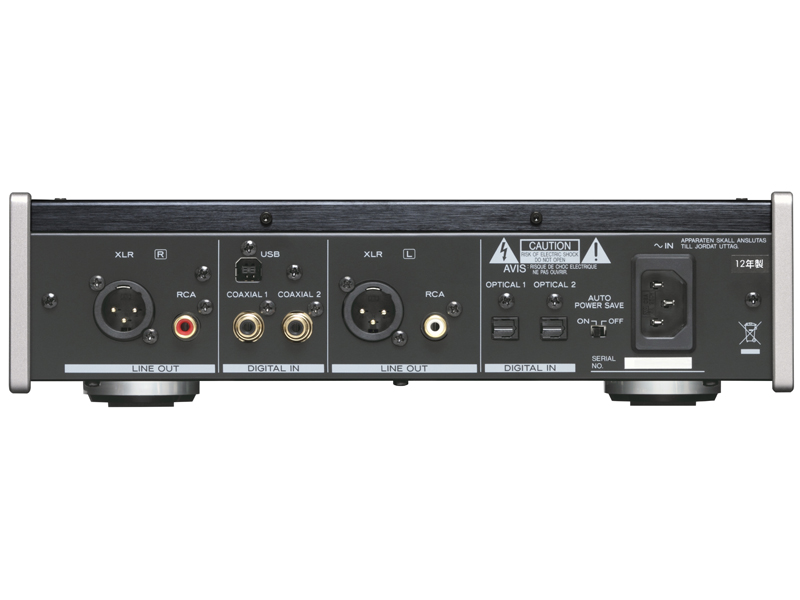







You should ask your dealer to bring the CH stuff he wants to sell you for home audition in your system. IMO there is no way to tell what will sound better in your system.
MSB Reference vs CH C1.2